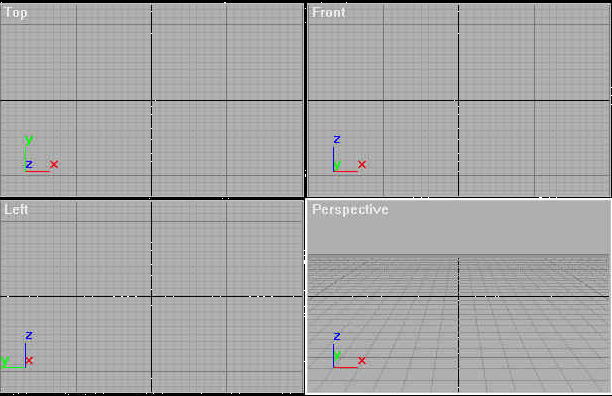|
|
|
 |
[ HOME PAGE ][ ADVERTISE ][ BUDDHISM ][ BUY ][ CHAT ][ CHECK MAIL ][ ENTERTAINMENT ][ FREE E-MAIL ][ FREE WEB GRAPHICS ][ HOT LIST ][ JOB BANK ][ JOIN AS FRIEND ][ KIDS ][ MUSIC ][ NEWS ][ PEN FRIENDS ][ SPORTS ][ WALLPAPERS ] |
| [ BACK TO 3D STUDIO MAIN PAGE ][ LEVEL 01 ][ LEVEL 02 ][ MATERIAL EDITOR ] | |
Getting Around the 3DS MAX User Interface
When you start 3DS MAX, you are presented with a default user interface (maxstart.cui). This consists of four viewports surrounded by tools and controls. The viewports are your porthole onto the world of 3D. The layout of these viewports and tools and controls is user-configurable: you can load other user-interface layouts or create your own. This section explains the default user interface. In 3DS it's also like Msword so don't worry about getting know every thing. It is very easy to handle.


A viewport can display the scene from the front or back, left or right, top or bottom views. It can also display different angled views such as perspective, user, spotlight, or camera. You can change the viewport by right-clicking the viewport label, or using keyboard shortcuts.Viewports can also display utilities like the MAXScript Listener or the Asset Manager. Or they can show Schematic View or Track View.
Asset Manager in a viewport
Right-clicking the viewport label brings up other options as well. Here you will find the Configure command that leads you to dozens of options for viewport configuration. On the Layout tab you'll find choices for different layouts for the viewports.